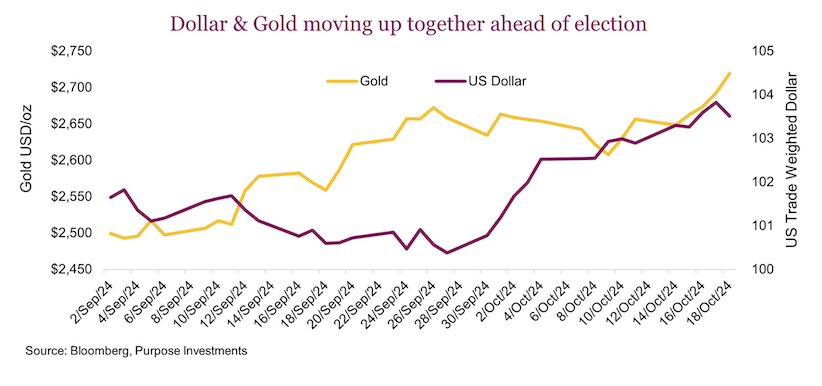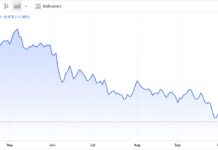Equity markets have moved higher over the past couple months, with decent economic and inflation news as the tailwinds. But if history is any guide, the few weeks before a U.S. presidential election often sees a spike in volatility due to uncertainty, amongst other things.
And that could be the case this year as well.
With such a close race, this may even magnify any volatility. But then again, this market has easily pushed through lots of obstacles – from a yen carry trade debacle to escalating global conflicts.
For the record, we don’t really like to talk about politics or elections from a portfolio implications perspective for a few reasons. Everyone has seen in past US presidential elections that polls can be proven wrong; truth be told, people often answer one way and behave another. The other challenge is that who knows if anything said during the campaign actually becomes policy.
And then the biggest variable – how will the S&P 500 Index and the broader financial markets react to election results and/or what is already priced in? When Trump upset the polls to win in 2016, markets dropped near 10% in overnight trading only to open the next morning roughly flat, and then move higher in the following days.
Add all this up, and deviating from your long-term portfolio allocation given a pending election is likely a bad strategy as it’s all just a bunch of coin flips.
All that being said, there are some things to at least consider. Obviously the US presidential election outcome on November 5 is close enough to a dead heat. Today, the averaging of national polls has the Democrats with a slight lead and some signs of better momentum. On the other hand, Predictit, a crowd source/gambling venue, has Republicans winning. The only certainty? The outcome remains uncertain.

So far the markets seem to be pretty calm about this election. In years past, campaign comments seemed to result in higher intraday volatility approaching election day; nobody seems to care what they are saying this year. That may change as we get a bit closer, but certainly markets are rather calm at the moment. The chart above is the VIX, a measure of options volatility for the U.S. market, showing the 20 trading sessions before and after recent U.S. Presidential elections.
While equity markets don’t seem to mind the election uncertainty, currency markets are reacting. The volatility in currency options pricing has been rising, as has the U.S. dollar. Perhaps hedging, perhaps some dollar flows back to America. This has helped feed a stronger USD, which may reverse after the election as well.
Based on the polls and probabilities today, here are a couple of the more likely outcomes:
Democrats win with divided government – Divided government is often a positive for markets, because it is harder for government to implement policy changes. And fewer changes means less uncertainty, which markets like. This could be the best market scenario. Less risk of tariff escalations, which could prove damaging for markets and the economy and put upward pressure on inflation. Plus, increasing spending plans would prove challenging, helping deficit fears and helping put some downward pressure on yields. But, the tax cuts would likely expire, creating a pretty big economic hit in 2026.
Republican win with sweep – Tax policy gets extended or even more stimulative, a positive for the economy. However, deficit risks would be higher and faith in prudent government could waffle, leading to higher bond yields and inflation. The risk of a tariff tantrum 2.0 becomes very real which would add uncertainty.
Of course there are other scenarios, including ‘indecision 2024’. The probability of this becoming a contested election is likely higher than many years past. And even some of the positioning of comments or challenges as election day approaches, sort of appears to be laying the groundwork for a case contesting the election. This could really lead to uncertainty, and be potentially negative for markets. January 20 is the day a new president must be in place, and there is lots of time between November 5 and January 20.

One saving grace is that maybe everyone kind of expects this, to some degree. This is why, in our view, we have seen a move higher in safe haven assets.
Final thoughts
Hop on and get ready to go for a more volatile ride as we move towards election day. We would be very surprised if markets just kept sailing smoothly higher over the next two weeks leading to the vote. And volatility may well persist afterwards, especially if the results are contested. Then, when all the dust has settled, markets will resume trading more on rates, the economy and, of course, earnings.
Source: Charts are sourced to Bloomberg L.P., Purpose Investments Inc., and Richardson Wealth unless otherwise noted.
Twitter: @ConnectedWealth
The author or his firm may hold positions in mentioned securities. Any opinions expressed herein are solely those of the authors, and do not in any way represent the views or opinions of any other person or entity.







